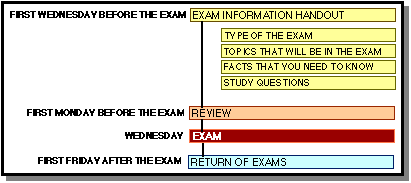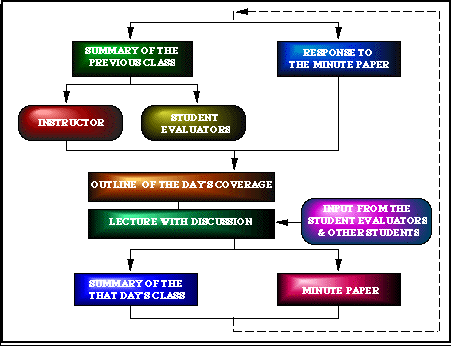 |
 |

|

|
|
|

| STAT. 2601 | |
| SPRING, 2004 | |
| COURSE WEB SITE | http://mnstats.morris.umn.edu//introstat/ |
| # OF CREDITS : | 4 |
| PREREQUISITE: | Quarter:
Math. 1202 or 1302 or 1140
Semester: Math. 1101 or 1021 |
| DAYS & TIME: | MWF 9:15-10:20 AM |
| BUILDING & ROOM: | SCI. 3610 & 3550 |
| INSTRUCTOR: | Dr. Engin A. Sungur |
| OFFICE: | 1350 SCIENCE |
| TELEPHONE: | x6325 |
| OFFICE HOURS: | MTWThF, 11-noon |
| sungurea@caa.morris.umn.edu |
COURSE DESCRIPTION: Descriptive statistics, elementary
probability theory; laws of probability, random variables, discrete
and continuous probability models, functions of random variables,
mathematical expectation. Statistical inference; point estimation,
interval estimation, and tests of hypotheese. Other statistical
methods; linear regression and correlation, ANOVA, nonparametric
statistics, use of statistical computing packages.
GOALS OF THE COURSE:
1. Learn to understand the main features of traditional and modern statistics.
2. Learn how to analyze statistical data properly.
3. To understand the role of formal statistical theory and informal data analytic methods.
4. Gain an understanding of statistical methods relevant to upper division interdisciplinary courses.
My aim is to enable the students to appreciate the richness of Statistical Science invite them to the probabilistic thinking. Statistics is the science of the future. Any technique that you are going to learn will help you to understand the unknown better, and in turn it will increase in your success in other courses and in your future professional career. I strongly encourage you to take the other advanced level statistics courses.
I hope that you will like statistics and choose it as a field
that you would like to work in.
STATISTICAL COMPUTING: The combination of more powerful
microcomputers and statistical software designed specifically
for them has revolutionized the world of Statistics and Data Analysis.
Use of statistical software helps students to understand the theoretical
results better and gives them a chance to apply the techniques
that they will learn, to the real world problems. WEBSTAT, SYSTAT and
MINITAB
are among the ones which are widely available for this purpose. In this
course you may use WEBSTAT, MINITAB or
STATLETS which are Java Applets for
statistical analysis and graphics
COURSE WEB SITE: The site includes general information
about the course, activities and links to the other sites related
with the statistics. Students are encouraged to visit the page
regularly and make suggestions to the instructor for improvement.
COURSE DESCRIPTION: The course will concentrate on Probability Theory and Statistical Methods and cover the following topics: (i) Probability Theory; set theory, axiomatic foundations, conditional probability and independence, Bayes' Rule, random variables. Transformations and expectations; expected values, moments and moment generating functions. Common families of distribution; discrete and continuous distributions. Multiple random variables; joint and marginal distributions, conditional distributions and independence, covariance and correlation, multivariate distributions. Properties of a random sample and central limit theorem. (ii) Graphical and Descriptive Statistical Methods; stem-and-leaf displays, histograms, boxplots, quantile plots, measures of location, variation and position. (iii) Methods of Statistical Inference; estimation, test of hypothesis, linear regression and correlation, analysis of variance, nonparametric statistics.
COURSE MATERIAL: McClave & Sincich, Statistics (Eighth Edition), Prentice Hall, 2000
| RECOMMENDED WEB SOURCES |
|
|
|
|
|
|
EXAMINATION POLICY: Three midterm examinations and a final
exam will be given. Time table for the examinations is given below:
| EXAMINATION 1 | FEBRUARY 11, (WEDNESDAY) | SCI. 3610 | 9:15-10:20 |
| EXAMINATION 2 | MARCH 17, (WEDNESDAY) | SCI. 3610 | 9:15-10:20 |
| EXAMINATION 3 | APRIL 21, (WEDNESDAY) | SCI. 3610 | 9:15-10:20 |
| FINAL | MAY 6, (THURSDAY) | SCI. 3610 | 8:30-10:30 |
 |
EACH EXAMINATION
(INCLUDING THE FINAL) WILL BE CLOSED-BOOKS AND CLOSED-NOTES.
HOMEWORKS: Eight
homeworks will be assigned. No late homeworks will be accepted
without a valid excuse. Solutions will be available at the following
class.
COURSE GRADE: The
weights of homeworks midterm exams and final exam are given below.
| HOMEWORKS: | 15% |
| MIDTERM EXAMS: | 60% |
| FINAL EXAM: | 25% |
 and follow the instructions:
and follow the instructions:
PLEASE FEEL WELCOME TO SEE ME OUTSIDE OF THE
CLASS, ANY TIME, IF YOU HAVE QUESTIONS, PROBLEMS, OR COMMENTS
PERTAINING THE COURSE WORK.

|
TOPIC |
READING |
PART I
|
INTRODUCTION TO STATISTICS |
M & S 1-18 |
|
DESCRIPTIVE STATISTICS |
M & S 19-106 |
PART II
|
PROBABILITY |
M & S 107-172 |
|
RANDOM VARIABLES |
|
|
DISCRETE RANDOM VARIABLES |
M & S 173-216 |
|
CONTINUOUS RANDOM VARIABLES |
M & S 217-260 |
|
SAMPLING DISTRIBUTIONS |
M & S 261-286 |
PART III
|
STATISTICAL INFERENCE |
|
|
ESTIMATION |
M & S 287-326 |
|
TESTS OF HYPOTHESES |
M & S 327-378 |
|
INFERENCE BASED ON TWO SAMPLES |
M & S 379-440 |
|
ANALYSIS OF VARIANCE |
M & S 441-508 |
|
LINEAR REGRESSION |
M & S 509-574 |
|
CHI-SQUARE TEST |
M & S 705-738 |
|
NONPARAMETRIC STATISTICS |
M & S 739-792 |
(IF THE TIME PERMITS WE WILL ALSO COVER MULTIPLE REGRESSION)

The organization of the in-class activities are summarized in the following flowchart. The main components of the organization structure are:
(i) Summaries and Outline:
These two components, hopefully, will provide a smooth transition
between the topics and lectures. These will answer three basic
questions: Where have we been?, Where are we going?, and What
have we learned?
 |
(ii) Student Evaluators: Class
participation and discussion are very important on the learning
process. Students are encouraged to ask questions in the class.
Questions, comments could help the instructor to set up his/her
pace. The input from the students should be constant. If you point
out the weaknesses of the instructor, and the problems with the
course in general as soon as possible your learning process will
be enhanced. To formalize and promote active learning, each in-class
activity will be evaluated by the two students. These students
will be responsible to point out all the problems that might affect
the learning of the rest of the class. For example, the topics
that are not clearly covered, pace of the lecture, use of the
blackboard, problems with taking notes, etc. Time to time
student evaluators will be asked to make a summary of the previous
class.
|
EVALUATOR |
DATE
1 |
DATE
2 |
|
Aube,Liana
M |
1/12,14,16 |
3/1,3,5 |
|
Bachman,Stacey |
1/21,23 |
3/15,17,19 |
|
Creen,Jeffrey
F |
1/26,28,30 |
3/22,24,26 |
|
Douglas,Michael
Vincent |
2/2,4,6 |
3/29,31,4/2 |
|
Durand,Adam
P |
2/9,11,13 |
4/5,7,9 |
|
Fahse,Matthew
B |
2/16,18,20 |
4/12,14,16 |
|
Hosker,Kyle |
2/23,25,27 |
4/19,21,23 |
|
Juhnke,Zachary
A |
3/1,3,5 |
4/26,28,30 |
|
Kyle,Ross
Robert |
1/12,14,16 |
3/15,17,19 |
|
McLennan,Megan
|
1/21,23 |
3/22,24,26 |
|
Prodger,Amanda
|
1/26,28,30 |
3/29,31,4/2 |
|
Scadlock,Ryan
|
2/2,4,6 |
4/5,7,9 |
|
Stone,Michael
|
2/9,11,13 |
4/12,14,16 |
|
Stricker,Aaron
M |
2/16,18,20 |
4/19,21,23 |
|
|
1/12,14,16 |
4/26,28,30 |
(iii) Minute paper: Time to time you will be asked to answer the following three questions:
1. What was the most important thing you learned today?
2. What was the most important thing you learned yesterday?
3. What questions are uppermost in your mind as we conclude this class session?
Answers to these questions will help the instructor on setting up her/his pace, pin-point the topics that the students are having problems on understanding, to correct misunderstanding etc. The questions are related with effectiveness of the lecture, retaintion of the information delivered, and effectiveness of the teaching in general.
The topics that will be covered are mostly in the
text book. If a topic is not in your textbook, then it will be
pointed out in the lecture and/or handouts will be provided.
|
|